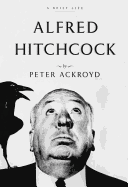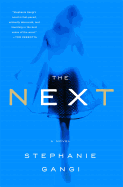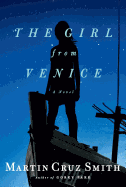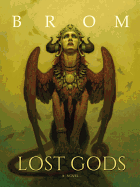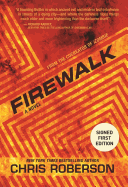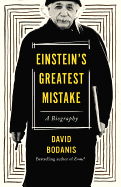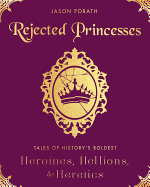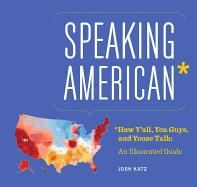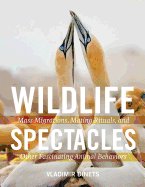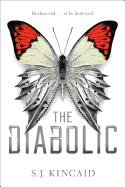Friday, November 4, 2016
In The Hidden Life of Trees: What they Feel, How they Communicate (Greystone Books), Peter Wohlleben illuminates how trees form underground networks that allow them to grow together and nurture each other. As a forest ranger who has immersed himself in scientific literature, Wohlleben argues that people need to take on a role of stewardship of trees in order to preserve and create healthy forests.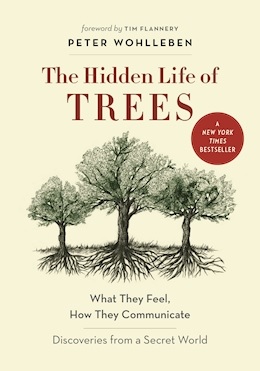 We asked him where his sense of wonder about trees and forests comes from: "It comes from the guided tours I have been doing for 25 years. I never wanted to write a book, but I wanted to tell people about my forest."
We asked him where his sense of wonder about trees and forests comes from: "It comes from the guided tours I have been doing for 25 years. I never wanted to write a book, but I wanted to tell people about my forest."
He avers that trees talk to each other, take care of each other, and form a community. They create a society of trees. "They also pass on memories to the next generation... trees are so slow, so we can't see how they behave or what they are doing because to us they don't move. But they move. For example, there's new research that shows trees sleep at night and let down their branches. At first sunlight they stand up again. And when trees are next to streetlights that are on all night, they can't sleep and they die prematurely."
He believes that trees should have rights. How does he see that happening, given that many people view trees as a commodity? "In Switzerland, the rights of plants is in their constitution. I'm not saying that we shouldn't use timber. It's just that any time we have a choice to treat trees a little bit better, we should do it. We divide animals and plants into first- and second-class beings, but trees are not second-class beings."
His next book will be about the inner life of animals. "There are many amazing things. For example, research shows that flies can dream. My relationship with animals is even longer than that with trees. When I was a teen, I had a chicken I raised from an egg that followed me around like I was its mother. Really, the animal book should have come first." --Justus Joseph
The Next
by Stephanie Gangi
If all you know of ghost stories is from Scouts or summer camp, wait until you meet Joanna DeAngelis in Stephanie Gangi's first novel, The Next. Joanna is divorced, dying too soon from recurrent cancer; in home hospice under the care of her daughters, Laney and Anna; guided to the bathroom by her poodle, Tom; and angry as hell at her much younger lover, Ned, who left her for celebrity dermatologist Trudi, with her global social media following. Joanna is prepared for the end but unclear about what comes next. To her surprise, she is transmigrated into an invisible ghost "between realms," where she needs to choose a mission "to get to the Light." Still bitter toward Ned, the answer is obvious: "Revenge. It feels right, it's a classic, why reinvent the wheel? Isn't revenge what ghosts do?" And so off she goes to haunt the self-centered Ned. What fun Joanna has manipulating and destroying this cad's smug world.
Despite her somewhat over-the-top premise, Gangi, a poet and corporate communications strategist, tells a powerful story of family, love, grief and loyalty. As the thrill of humbling Ned wanes, ghost Joanna begins to reflect on her life with renewed pride in her daughters. There's not much funny about cancer, divorce and a broken heart, but The Next is an entertaining ghost story. Gangi gives it enough heft, however, to be a thoughtful meditation as well, on how to be a good mother, daughter, sister and lover. --Bruce Jacobs, founding partner, Watermark Books & Cafe, Wichita, Kan.
Discover: A contemporary ghost story of vengeance is also an incisive portrait of a cancer-stricken woman and her two daughters striving for independence.
Mystery & Thriller
The Girl from Venice
by Martin Cruz Smith
The girl from Venice is floating lifelessly in a lagoon when fisherman Cenzo Vianello finds her. Shortly after he brings her aboard his boat, he discovers that German soldiers are looking for her. To his surprise and despite appearances, she is far from lifeless, something that could change quickly if the Germans catch her, especially since she has killed one of them. With that, Martin Cruz Smith (Gorky Park, Tatiana) gets The Girl from Venice, set in occupied Italy in the waning days of World War II, off to a strong start.
Cenzo hides the girl, Giulia, in his fishing shack and helps her with a plan to escape. Meanwhile back at home, he's trying to thwart his mother's efforts to wed him to his younger brother's widow when the war is over. But even after he gets Giulia out of Venice, he can't get her off his mind. That's partly because too many people--Germans, Fascists, partisans and their collaborators--are still after her. Even though Cenzo doesn't know exactly where she's gone, they believe he's the key to finding her. Still, that's not the whole reason Cenzo hopes to track her down before they do.
Cenzo really has no idea what he's getting himself into, and his confusion is occasionally mirrored by plot convolutions. Nevertheless, snappy dialogue and a brisk pace keep readers engaged as the tension builds, and Cenzo emerges as an engaging, unlikely hero. Readers who enjoy historical fiction and thrillers will appreciate how Smith combines them in The Girl from Venice. --Florinda Pendley Vasquez, blogger at The 3 R's: Reading, Riting, and Randomness
Discover: A young woman and a fisherman dodge soldiers and spies in northern Italy as World War II nears its end.
Science Fiction & Fantasy
Lost Gods
by Brom
With Lost Gods, dark fantasist Brom (Krampus: The Yule Lord) once again brings life to a host of fiends and nightmares in prose and images.
Chet Moran, a small-time drug dealer in 1976 Alabama, comes off a seven-month jail sentence with a fresh perspective on what matters in life, and he sets out to win back his pregnant wife, Trish. Since Trish's father, Judge Wilson, literally wants to kill Chet, their reunion consists of him sneaking into her bedroom at her parents' house and asking her to run away with him. After extracting a promise that Chet will leave behind his checkered past, Trish agrees, but the lovers are caught by the Judge's friends Tom and Coach. In his haste to escape, Chet hits Coach with his car, killing him. Fleeing to South Carolina, Chet and Trish take refuge at the home of his maternal grandmother, Lamia, a powerful witch with whom he shares a psychic connection. Lamia offers the couple sanctuary and healing, but a betrayal leaves Chet murdered and the soul of his unborn child vulnerable to an ancient, deadly evil.
His soul cast adrift, Chet accepts a mission from Senoy, an angel trapped on earth. If he searches Purgatory and locates the angel's key--stolen by Chet's long-dead grandfather--the angel can restore the balance of life and death, saving Chet's child. Brom's Purgatory is a vast country with its own history, government and social customs. Clearly influenced by Dante Alighieri's Divine Comedy, Lost Gods combines elements of Catholicism, ancient mythology and pulp horror tradition for a sprawling quest powered by a versatile imagination. --Jaclyn Fulwood, blogger at Infinite Reads
Discover: Brom's dark fantasy underworld alludes to Dante as his dead protagonist searches Purgatory for the key to saving his daughter.
Firewalk
by Chris Roberson
FBI agent Izzie Lefevre has been to the fictional West Coast city of Recondito before, investigating a serial killer alongside local detective Patrick Tevake. Izzie confronted the murderer five years ago and sustained both physical and mental injuries before he was ultimately subdued. She's not ready to return when Patrick calls her about a connection he's discovered between a new street drug and the old case.
Grudgingly, Izzie joins her former colleague and discovers that he may be right: the evidence points to the previous serial killer's plans coming to fruition, even after death.
Teaming up with Dr. Joyce Nguyen, the heavy metal-loving medical examiner and Patrick's love interest, the investigators follow the trail of drugs, hidden laboratories and zombie-like addicts that leads to dark secrets at the heart of Recondito. Luckily, Izzie and Patrick both have relatives steeped in the supernatural--Izzie's grandmother was a voodoo priestess and Patrick's great-uncle a shaman. The investigators are willing to suspend their rational beliefs and search for the truth far beneath the city streets in an abandoned research facility.
Firewalk is as entertaining as can be, filled with humor and a satisfying depth of plot. The characters are skillfully crafted and demonstrate exceptional savvy without becoming implausible. Peering around the corners in Recondito is wicked good fun; Roberson's fantasy comics background (iZombie, Fables, Hellboy) has prepared him to tell this tale of the occult with a marked sense of believability. --Rob LeFebvre, freelance writer and editor
Discover: This engaging story of the paranormal boasts magical threats, long-dead serial killers and a street drug that turns addicts into zombies.
Biography & Memoir
Alfred Hitchcock: A Brief Life
by Peter Ackroyd
Few film directors are as recognizable to the general public by name, visage and voice as the Master of Suspense, Alfred Hitchcock (1899-1980). He carefully cultivated his public persona through numerous interviews, films that rarely ventured out of his chosen genre and even by playing a comedic version of himself as host of the TV series Alfred Hitchcock Presents. There are dozens of full-length biographies devoted to Alfred Hitchcock (including Donald Spoto's 600-page The Dark Side of Genius and Patrick McGilligan's 800-page Alfred Hitchcock: A Life in Darkness and Light), but Peter Ackroyd's Alfred Hitchcock offers a concise, urbane and streamlined overview of Hitchcock's life and work in just 260 pages, while still delivering psychological insights about the man and thoughtful evaluations of his films.
"By his own account he was afraid of everything," writes Ackroyd (Charlie Chaplin). But rather than being crippled by these fears, "Hitchcock projected his anxiety into his films." Sometimes his work reduced his anxiety--Hitchcock created his most vivacious picture, North by Northwest, while despairing over his wife's cervical cancer treatment. Other times, his anxiety fed his films--like Psycho. However, when Paramount balked at producing the dark and violent thriller, Hitchcock waived his director's fee in favor of a 60% ownership of the film, shot it with a TV crew and made a fortune.
With neuroses and quirks that spanned his real and reel lives, Alfred Hitchcock is a fascinating subject, and Ackroyd's biography is an engaging, tightly packed and witty overview of the man and his 53 films. --Kevin Howell, independent reviewer and marketing consultant
Discover: Peter Ackroyd's Alfred Hitchcock is the perfect starting point for new fans of the Master of Suspense.
Nobody's Son: A Memoir
by Mark Slouka
In a body of work that includes a PEN Award-winning essay collection (Essays From the Nick of Time) and a well-regarded novel (Brewster), Mark Slouka has demonstrated an incisive mind with supple prose. He brings those same qualities to bear in Nobody's Son, a memoir of displacement, longing and the searing pain of family conflict.
Natives of Czechoslovakia, Slouka's parents, Zdenek and Olga, were teenagers when the Nazis occupied the country, in two stages, in 1938 and 1939. In 1948, they made their hair-raising escape from the country--now under Communist control. That flight launched them on an odyssey that started with 18 months in an Austrian displaced persons camp and took them to Australia, New York (where Slouka was born in 1958), Bethlehem, Pa., and eventually back to their homeland after the Velvet Revolution of 1989.
The Sloukas' journey was "not that different from that of the Syrian or Sudanese refugees in today's paper." And it left its scars on a couple whose marriage had been tension-filled from the start. Slouka wrestles bravely with the challenge that bedevils any conscientious memoirist--the unreliability of memory and the way every memoir is "riddled with fictions."
The title provides an ironic counterpoint to the reality of this intense, discomfiting account. Slouka's is, in fact, the story of a dutiful son, who, despite ample reason to do so, never abandoned his parents, even in an old age they chose to live thousands of miles from him. The sad truth of these pages is that love and the best intentions too often aren't enough to save vulnerable souls from the damage they inflict on themselves. --Harvey Freedenberg, attorney and freelance reviewer
Discover: Mark Slouka's memoir of life with his Czech immigrant parents is a moving portrait of displacement and loss.
Einstein's Greatest Mistake: A Biography
by David Bodanis
A physicist with the soul of an artist, whose unkempt face is still universally recognized, Albert Einstein has become a metonym for genius. David Bodanis's biography of the man who first described relativity focuses less on his science and his genius and more on his personality, an immutable constant that was both a strength and a liability.
Einstein's Greatest Mistake is a pleasure; reading it does not require weeks or an advanced degree in theoretical physics. Bodanis (E=mc2) explains and illustrates Einstein's discoveries simply, contextualizing them in his life and his contemporary science.
He begins with Einstein's youth in Munich, moving quickly to the scientist's early academic frustrations. These led Einstein to his post at the Zurich patent office and his 1905 "annus mirabilis"--miracle year--during which he made several major breakthroughs; 10 years later, he came up with his greatest achievement, the theory of general relativity. When experimentation seemed to disprove his theories, Einstein grudgingly "fixed" his formula, ruining the elegance he so loved. When his original work was later proven correct, he vowed never again to be so easily swayed. It was a tragic lesson that prevented Einstein from accepting the tenets of quantum mechanics, and ultimately led to isolation from the scientific community that revered him.
Hubris also led him astray in personal relationships. Bodanis gives voice to the women in Einstein's life, reflecting on their perspectives and quoting them when possible. Bodanis is nonjudgmental, albeit wistful that Einstein didn't accomplish more. The author, however, achieves a thoroughly engaging and illuminating read. --Zak Nelson, writer and bookseller
Discover: This brief, accessible biography describes Einstein's achievements but focuses on his humanity.
History
Rejected Princesses: Tales of History's Boldest Heroines, Hellions and Heretics
by Jason Porath
Jason Porath's Rejected Princesses: Tales of History's Boldest Heroines, Hellions and Heretics began with a discussion with his DreamWorks co-workers over which historical woman was least likely to be the heroine of a children's animated movie. He discovered that few of his co-workers had heard of historical figures like 17th-century Angolan queen Nzinga, who successfully defended her country from the Portuguese, or World War II Soviet tank driver Mariya Oktyabrskaya. He set out to change that.
The result is a collection of carefully researched, smart-mouthed essays about women who exemplify the idea that well-behaved women seldom make history. The essays are illustrated in a style that nods toward Disney's princesses without sexualizing their subjects (except in the cases of women whose stories depend on their sexuality). Some, such as Harriet Tubman and Joan of Arc, will be recognizable to everyone--though details of their stories may surprise readers. Many are virtually unknown. Few are actual princesses.
Rejected Princesses pushes the boundaries of what a collective biography of groundbreaking historical women should look like; they are often designed to provide female role models for girls. Porath includes stories that may not be suitable for children or for adults looking for heroines--his historical figures are chosen because they'd never be the subjects of a children's movie. (He's colored-coded stories by level of moral ambiguity.) In the end, he urges girls to glory in the fact that they come from "a long line of bold, strong, unbroken women"--princesses or otherwise. --Pamela Toler, blogging at History in the Margins
Discover: Jason Porath uncovers the stories of amazing women from history.
Social Science
Speaking American: How Y'all, Youse, and You Guys Talk: An Illustrated Guide
by Josh Katz
In December 2013, the New York Times published an online dialect quiz that became the paper's most-viewed page. Times graphics editor Josh Katz expands that quiz's contents and the powerful response it elicited with Speaking American: How Y'all, Youse, and You Guys Talk: An Illustrated Guide.
This large-format book organizes United States dialect patterns by subject matter: how we live, what we eat, where we go and more. Two-page color-shaded maps visually communicate regional usages, like the predilection for "rummage sale" in southeastern Wisconsin, over "garage sale" and "yard sale." Maps and text zoom in for unusual local outliers, like Pittsburgh's distinctive use of "yins" for the plural "you." Katz notes the rare case where gender is predictive of usage (women are more likely than men to say "bless you," or anything at all, when someone sneezes) as well as the "linguistic fault line running from Texas up through Arkansas, then tracking the Ohio River... toward the Mason-Dixon line," credited to white settlers' expansion patterns. Besides seriously investigating the questions of sneaker vs. tennis shoe, doodle bug vs. roly-poly, semi vs. 18-wheeler and more, Katz clearly enjoys his subject: especially amusing are the "How to Pretend You're From..." sections. For Nebraska, you might pick up some "pickles" at the store--not pickled cucumbers, but a form of legal gambling.
Offering some new material since the famous quiz and elucidating the original, Speaking American is a fascinating survey of U.S. dialects as well as a fun, humorous exploration of a nation. --Julia Jenkins, librarian and blogger at pagesofjulia
Discover: Regional linguistic patterns in the U.S. are explained with intelligence, whimsy and visual aids.
Nature & Environment
Wildlife Spectacles: Mass Migrations, Mating Rituals, and Other Fascinating Animal Behaviors
by Vladimir Dinets
In the rapidly paced technological world, it's sometimes easy to forget that we share this planet with thousands of animals of all shapes and sizes, which live, eat, mate and die in an endless cycle that's gone on for millennia. In Wildlife Spectacles: Mass Migrations, Mating Rituals and Other Fascinating Animal Behaviors, Vladimir Dinets (who has a Ph.D. in zoology from the University of Miami and wrote Dragon Songs) provides a close-up look at the fascinating birds, mammals, insects, reptiles and amphibians that coexist with us on earth. Beginning with the concept of mass migration, Dinets discusses what the world was like before it was subdivided and largely subdued by humans.
In fascinating detail, he discusses the courting and mating rituals of insects like the firefly and mammals like the Tule elk, found in California. He also considers the variety of complex behaviors that have evolved in numerous species to help them survive. Adaptive behavior and evolutionary changes have led many species to become predators rather than prey, while others have learned ways to escape predation, by using bright colors, toxins in the skin, special alarm calls that warn of predators, advanced hearing mechanisms or mimicry. Moreover, every species in the food chain has an effect on those above and below it, and Dinets debates the pros and cons of introducing an alien species to a particular environment.
Wildlife Spectacles is captivating and entrancing with both its information on a multitude of species and the full-color photographs throughout. Their stunning beauty is as much a reason to read this book as the text is. --Lee E. Cart, freelance writer and book reviewer
Discover: A zoologist examines the natural world and the fascinating creatures that share the planet with humans.
Children's & Young Adult
Wish
by Barbara O'Connor
Eleven-year-old Charlie Reese has plenty of reasons to make a wish--a father in jail, a mother who can't get out of bed and "getting shipped off to this sorry excuse for a town to live with two people I didn't even know"--but there's just one wish she makes every day.
Charlie wishes on the first star at night, three birds on a telephone wire, a camel-shaped cloud, a cricket in the house. But if you tell a wish, it won't come true, so even when she becomes friends with Howard, a "little ole redheaded up-down boy" (one of his legs is shorter than the other, so he walks with a hitch), she keeps her wish a secret as long as she can. Charlie doesn't get off to a terrific start in Colby, N.C. She antagonizes her teacher and fights with her classmates. But with the help of Howard, a stray dog named Wishbone and Aunt Bertha and Uncle Gus (her remarkably tolerant temporary guardians), Charlie begins to learn not only how to tame her temper but to understand that the long-wished-for "family that wasn't broken" may not be the one she was born into.
Barbara O'Connor (How to Steal a Dog; The Small Adventure of Popeye and Elvis; The Fantastic Secret of Owen Jester) captures a traumatic transition in a young girl's life without resorting to sentimentality or hard-to-believe happy endings. Charlie's prickly behavior is real, understandable and even charming at times, but readers will cheer as she settles and softens into authentic happiness. --Emilie Coulter, freelance writer and editor
Discover: When 11-year-old Charlie is sent to rural North Carolina for a more stable home environment, she finds surprising happiness with a friend, a dog and a kind aunt and uncle.
We Found a Hat
by Jon Klassen, illus. by Jon Klassen
Canadian-born Jon Klassen (illustrator of Caldecott Honors Sam & Dave Dig a Hole and Extra Yarn) is on a roll, his world happily a-gleam with shiny children's book award stickers. We Found a Hat is the charming grand finale of an appealingly minimalist picture-book trilogy that made its debut with I Want My Hat Back (2011), a Theodor Seuss Geisel Honor book, and was followed up by This Is Not My Hat, which won the 2013 Caldecott Medal.
At the bottom of a solid gray page, two tortoises stare at the tall white hat sitting on the ground between them: "We found a hat./ We found it together." Trouble is, there's one hat and two of them and it "looks good on both of us" (though, amusingly, it engulfs their entire heads when they try it on). Sidestepping potential conflict, the tortoises abandon the hat and try to "forget that we found it." One glances longingly back at the hat as they climb a nearby rock. (A saguaro cactus adds a Wild West flavor, especially as the sun sets. Will there be a showdown?) In Part Two, the two tortoises talk: "What are you thinking about?" asks one. "I am thinking about the sunset," responds the other. (Once again, the tortoise's eyes tell a different story.) In Part Three, both tortoises are facing the hat: "We are going to sleep. We are going to sleep here together." (Here, their truth-revealing, almond-shaped eyes are wide open.)
Readers may be surprised when the spare, visually witty story ends in dreamland, where both tortoises are floating side by side in a star-sprinkled black sky... both wearing tall white hats. Will this lovely vision survive the light of day? Ask Klassen. --Karin Snelson, children's & YA editor, Shelf Awareness
Discover: In the winning conclusion of Caldecott artist Jon Klassen's "hat" trilogy, two desert tortoises try to figure out what to do when they find one hat they both like.
The Diabolic
by S.J. Kincaid
Deception of the highest order lies at the heart of the entertaining, action-packed teen novel The Diabolic by S.J. Kincaid (Insignia). In a remote future, humanity is spread across the universe into various factions united under the cruel rule of the Empire. As members of the Empire's upper class, Senator von Impyrean and his wife acquire a "Diabolic" as a lifelong bodyguard for their young daughter, Sidonia. A Diabolic is a fully customized humanoid killing machine "fashioned to be utterly ruthless and totally loyal to a single individual."
The story is told in the engaging first-person voice of a white-blonde "girl" Diabolic named Nemesis who is programmed to value Sidonia above all else: "A constant roar within my skull now, changing me, shifting me. I wanted to help this girl. I wanted to protect her." As Sidonia comes of age, the status of the Impyreans is endangered by her father's blasphemous interest in science and technology, subjects long forbidden by the Helionic faith of the Empire. When the Emperor abruptly summons Sidonia to his court without explanation, her parents fear for her life, and it seems the only way Nemesis can keep her charge safe is to impersonate her.
The Diabolic sings with intrigue as Nemesis finds her way among the upper echelons of society who indulge their every whim in the Emperor's outer-space court. Because appearances shift as quickly as loyalties, Nemesis must waste no time learning to navigate the realm she's always known to be out of her reach: humanity itself. With unpredictable twists and mounting suspense, The Diabolic is a breathless journey into the very center of what it means to be human. --Kyla Paterno, former children's & YA book buyer
Discover: In S.J. Kincaid's interstellar tale of court intrigue, a genetically engineered bodyguard must attempt to impersonate the girl she was programmed to protect.


